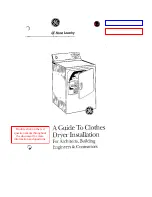
Introduction
Chapter 1 (continued)
Due to the complexities of the mixing and drying process, the optimal amount
of sample to use is best determined by trial and error.
The pulse flow works most effectively on “stringy” samples that will not mix,
particularly when they are wet. The short blasts of air from the pulse flow
essentially mixes the sample with each pulse. This is usually only required until
the sample loses its external moisture, after which we find most samples will
fluidise more easily. Using a pulse flow may not show any improvement in
drying more ideal, easier to mix samples.
Basic Principles of Fluidised Beds
When a stream of gas is passed upwards through a bed of material at a certain
velocity the bed will first expand, then become suspended and agitated by the
gas stream to form a fluidised bed.
This has the appearance of boiling liquid due to the formation ofmany small
bubbles at the surface of the sample, the so-called “bubbling fluidisation”.
Ideal fluidisation is achieved only with spherical particles of a narrow size
distribution range and with the appropriate amount of sample with the
optimal flow of gas. The optimum operating gas velocity for bubbling
fluidisation lies above the minimum fluidising velocity but below the velocity
of entrainment of the material. Needless to say, this ideal is not often
achieved with real samples. With real samples and maximum amounts of
material to dry, the other forms of drying are more generally obtained.
At higher gas velocities, larger bubbles and plugs of material are formed
resulting in a more violent type of fluidisation called slugging or spouting.
Particles that are needle shape (have a large aspect ratio) are more likely to
give “spouting fluidisation” with the spout arising from the centre of the
sample and falling back down along the outer surface of the sample near the
tub.
- 11 -
Summary of Contents for Fluid Bed Dryer
Page 1: ...USER GUIDE FLUID BED DRYER...














































